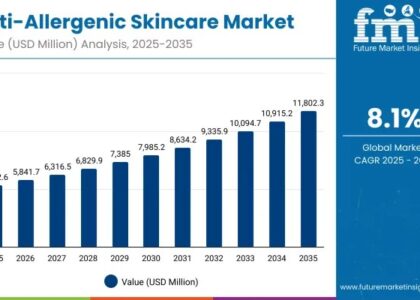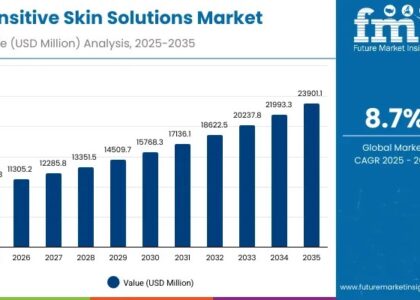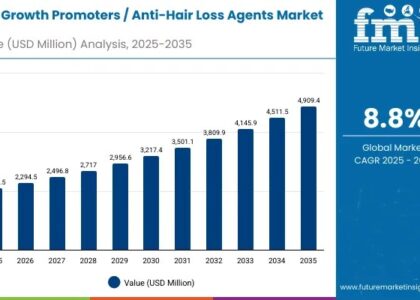The Powder Injection Molding (PIM), encompassing both Metal Injection Molding (MIM) and Ceramic Injection Molding (CIM), has long been recognized for its ability to produce complex, high-performance components with remarkable efficiency. Yet, one of the most transformative aspects of this technology—its application in micro-precision manufacturing—remains largely underexplored in mainstream market analysis. As industries increasingly demand ultra-small, intricate parts with high tolerances and exceptional material properties, micro-PIM is emerging as a pivotal force driving miniaturization across various high-tech sectors. From implantable medical devices to micro-gears in defense systems, micro-scale PIM is enabling innovation at dimensions once considered unfeasible through traditional manufacturing methods.
Micro-Precision PIM: An Uncommon Yet Growing Trend
The mainstream conversation surrounding Powder Injection Molding often centers on automotive and consumer electronics applications. However, the evolution of micro-PIM has opened up new frontiers in engineering where traditional machining or additive manufacturing fall short. In micro-precision manufacturing, components are typically smaller than 1 mm and often weigh less than 0.1 grams.
Request Your Sample and Stay Ahead with Our Insightful Report!
At this scale, the consistency and accuracy required for mass production pose immense technical challenges. PIM overcomes these through its capability to replicate high-precision molds using finely granulated powders and carefully controlled injection processes.
Micro-PIM’s advantages lie in its ability to preserve the mechanical strength and surface finish of miniature components while delivering complex geometries without secondary operations. Unlike CNC machining, which is constrained by tool access and cost inefficiency at micro scales, or photolithography, which is mostly limited to 2D patterns, micro-PIM provides a three-dimensional, scalable solution with excellent repeatability.
Applications Driving Micro-PIM Growth
The demand for micro-fabrication has exploded in industries that prioritize miniaturization without compromising performance. In the medical sector, for instance, micro-sized implants, surgical instruments, and endoscopic components increasingly rely on micro-MIM parts due to their biocompatibility, strength, and dimensional stability. A notable example includes the use of micro-sized titanium and stainless-steel PIM components in minimally invasive surgical tools, where precision is critical to patient safety and device longevity.
In the world of micro-electromechanical systems (MEMS), micro-PIM is enabling the production of intricate housings and mounts for sensors and actuators. These parts require not only a high degree of accuracy but also compatibility with harsh environments, which high-performance ceramics molded through micro-CIM can provide. Companies involved in defense and aerospace applications are also turning to micro-PIM for micro-gears and actuating parts used in optical targeting devices and UAVs, where weight reduction and precision are mission-critical.
Material Innovation and Process Advancements
What makes micro-PIM especially relevant today is the parallel advancement in material science. The availability of ultra-fine powders—particularly those based on titanium alloys, Inconel, and zirconia—has made it possible to produce micro-components with tailored properties. These powders enable high densification during sintering while preserving fine features down to the micron level. This is vital in applications such as high-temperature electronics or chemically resistant micro-valves used in chemical metering systems.
Process enhancements, such as low-pressure injection molding and improved feedstock formulations, have also played a role in making micro-PIM commercially viable. Advanced binder systems that support clean debinding without distortion are helping manufacturers reduce cycle times and improve yield rates, making micro-PIM a more attractive option even for lower volume, high-value applications.
Challenges in Scaling Micro-PIM and Overcoming Them
Despite its potential, micro-precision PIM comes with challenges, particularly in mold fabrication, powder handling, and dimensional control during sintering. The cost of manufacturing precision micro-molds remains high, and the risk of powder agglomeration during feedstock preparation can lead to defects at the micro scale.
To counter these issues, companies are investing in hybrid techniques, such as combining micro-PIM with laser machining or micro-electroforming to refine part features post-sintering. Additionally, the use of real-time process monitoring and simulation tools is allowing for better predictability of shrinkage and warpage, which are critical concerns in micro-scale molding.
Industry collaborations and academic research are further pushing boundaries. Institutions in Germany and Japan, for instance, are exploring AI-assisted mold design and nano-coating technologies to reduce friction during injection and improve demolding performance in micro-scale tools.
Reach out to Sales to Secure Your Copy of the Report Now!
Economic Impact and Market Forecast
The global Powder Injection Molding market, currently valued at several billion dollars, is projected to grow steadily with a compound annual growth rate driven by demand from sectors like automotive and consumer electronics. However, the micro-PIM segment, while smaller in absolute value, is poised for faster proportional growth due to its expanding applications and technological relevance. The shift towards Industry 4.0 and the integration of compact, high-functionality components in everything from wearables to autonomous systems means the importance of micro-precision components will only escalate.
As OEMs continue to seek ways to pack more performance into smaller packages, micro-PIM offers a unique manufacturing solution that aligns with these objectives. Its ability to deliver mass production capabilities without sacrificing design freedom or material performance gives it an edge over competing technologies in niche, high-demand markets.
Key Segmentation
By Material Type:
By Material Type, the industry is divided into Ceramic Powders, Metal Powders, and Plastic Powders.
By Technology:
By Technology, the industry is divided into Ceramic Injection Molding (CIM), Metal Injection Molding (MIM), and Plastic Injection Molding (PIM).
By End Use Industry:
By End Use Industry, the industry is divided into Automotive, Medical & Healthcare, Aerospace, Consumer Goods, Industrial Equipment & Machinery, and Others.
By Region:
The report covers key regions, including North America, Latin America, Western Europe, Eastern Europe, East Asia, South Asia, and the Middle East and Africa (MEA).
About Future Market Insights (FMI)
Future Market Insights, Inc. (ESOMAR certified, recipient of the Stevie Award, and a member of the Greater New York Chamber of Commerce) offers profound insights into the driving factors that are boosting demand in the market. FMI stands as the leading global provider of market intelligence, advisory services, consulting, and events for the Packaging, Food and Beverage, Consumer Technology, Healthcare, Industrial, and Chemicals markets. With a vast team of over 400 analysts worldwide, FMI provides global, regional, and local expertise on diverse domains and industry trends across more than 110 countries.
Join us as we commemorate 10 years of delivering trusted market insights. Reflecting on a decade of achievements, we continue to lead with integrity, innovation, and expertise.
Contact Us:
Future Market Insights Inc.
Christiana Corporate, 200 Continental Drive,
Suite 401, Newark, Delaware – 19713, USA
T: +1-347-918-3531
For Sales Enquiries: sales@futuremarketinsights.com
Website: https://www.futuremarketinsights.com
LinkedIn| Twitter| Blogs | YouTube






